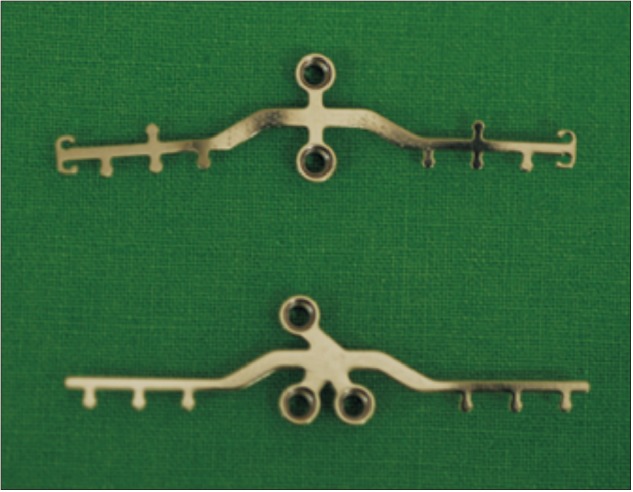Sung Youn Jo, Mohamed Bayome, Justyn Park, Hee Jin Lim, Yoon-Ah Kook, Seong Ho Han
Comparison of treatment effects between four premolar extraction and total arch distalization using the modified C-palatal plate.
- Korean J Orthod 2018;48:224-235
Q1. There have been various methods introduced for the maxillary total arch distalization using temporary anchorage devices. Among them, a direct anchorage system using bilateral buccal miniscrews is most popularly used because of its simple design and convenience of application. I would like to know if there are any advantages and specific indications of MCPP compared with the direct anchorage system using buccal miniscrews.
Q2. About the design of modified C-palatal plate (MCPP), there are three miniscrews in the parasagittal area for the fixation of MCPP on the palate (Figure 4 in the original article). However, I think that two miniscrews are just enough to prevent rotation of the MCPP arm. I wonder if there are any special reasons for the authors to use three miniscrews.
Q3. The result of this study revealed that mandibular incisors intruded in both groups after the treatment. In general, the mandibular incisors tend to be extruded during retraction because the force vector is located above the center of resistance of the mandibular incisors; however in this study, the incisors were intruded even though Class III elastics were used. I wonder if the authors used any additional mechanics to prevent extrusion of the mandibular incisors.
Q4. I am wondering how the authors determine the length of the MCPP and the position of hooks on the palatal bar in clinical practice. Do you use standardized designs or plan different force vectors depending on the malocclusion pattern of the patients (for example, vertical pattern such as deepbite or openbite) and are there any anatomical limitations when designing the MCPP appliances?
A1. A direct anchorage system supported by buccal miniscrews may be effective in total arch distalization. However, the application of MCPP presents additional advantages in similar clinical situations. First of all, using the palate as a miniscrew insertion site decreases the risk of adjacent root injuries to almost nil. Significance of its implication may be fully appreciated when it is considered that root surface resorption can result even without any physical contact between the root and miniscrew surfaces if a miniscrew is inserted in a close proximity.12 Also, the close interradicular distance in the posterior region often mandates miniscrew insertion and removal to be repeated until the desired amount of distalization is achieved. In contrast, using MCPP will help overcome such disadvantages.
A2. Presently, MCPP can be supported by either 2 or 3 miniscrews (Figure 1). Clinically, 2-miniscrew-supported MCPP could be effectively used in adult patients while 2-miniscrew-supported MCPP may be recommended for growing patients where physical disturbance in the area of midpalatal sutural growth should be minimized during miniscrew placement.
A3. Final positions of the mandibular incisors are often dictated by the treatment plan. Because it was anticipated that the overbite could increase during overjet reduction by retraction of the maxillary incisors, vertical positions of the maxillary and mandibular incisors were closely monitored throughout the treatment. When deemed desirable, strategic bracket positioning and intrusive mechanics such as intrusion arch were used to produce the outcome.
A4. As shown in Figure 1, MCPP comes with standardized designs. It should be, however, formed to the contour of the palatal surface before its placement procedure. If needed, different force vectors may be applied by engagement of elastic modules to the hooks at different locations on each arm. Clinically, this approach has been shown to be effective in alleviation of openbite.
References
1. Kim H, Kim TW. Histologic evaluation of root-surface healing after root contact or approximation during placement of mini-implants. Am J Orthod Dentofacial Orthop. 2011; 139:752–760. PMID: 21640881.

2. Oh HJ, Cha JY, Yu HS, Hwang CJ. Histomorphometric evaluation of the bone surrounding orthodontic miniscrews according to their adjacent root proximity. Korean J Orthod. 2018; 48:283–291. PMID: 30206527.





 PDF
PDF ePub
ePub Citation
Citation Print
Print



 XML Download
XML Download